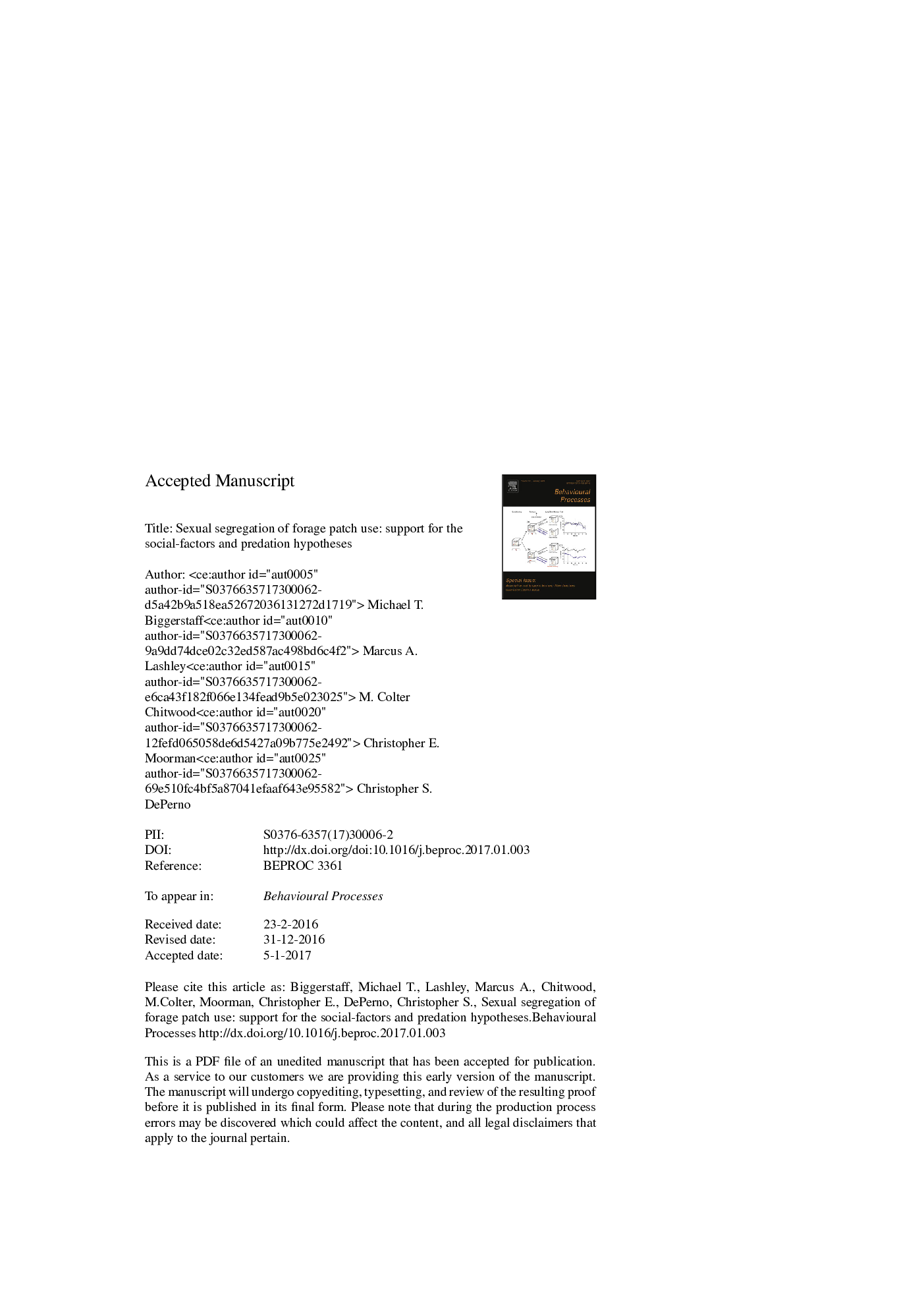| کد مقاله | کد نشریه | سال انتشار | مقاله انگلیسی | نسخه تمام متن |
|---|---|---|---|---|
| 5539681 | 1553144 | 2017 | 28 صفحه PDF | دانلود رایگان |
عنوان انگلیسی مقاله ISI
Sexual segregation of forage patch use: Support for the social-factors and predation hypotheses
ترجمه فارسی عنوان
جداسازی جنسی از استفاده از پچ علوفه: حمایت از عوامل اجتماعی و فرضیه های شکارچی
دانلود مقاله + سفارش ترجمه
دانلود مقاله ISI انگلیسی
رایگان برای ایرانیان
کلمات کلیدی
موضوعات مرتبط
علوم زیستی و بیوفناوری
علوم کشاورزی و بیولوژیک
علوم دامی و جانورشناسی
چکیده انگلیسی
Nearly all species of sexually dimorphic ungulates sexually segregate. Several hypotheses have been proposed to explain this phenomenon, including the social-factors hypothesis (SFH) and the predation hypothesis (PH). Interestingly, previous studies have accepted and rejected each hypothesis within and across species but few studies have simultaneously tested both hypotheses in the same population. In August 2011 and 2012 using 7680 photographs taken with camera traps in standardized forage patches, we tested two predictions of the SFH: 1) foraging efficiency of both sexes would decrease when foraging rate in mixed-sex groups relative to single-sex groups, and 2) activity patterns (i.e., the pattern of temporal use of forage patches on a diel scale) of the sexes would decrease in temporal overlap at the forage patch level (i.e., social segregation) compared to the overall temporal overlap of activity patterns of the population. Also, we tested two predictions of the +PH : 1) the relationship between feeding rates of each sex, and 2) temporal activity overlap would change with changing risk level of forage patches as a result of differing risk perception between sexes. In support of the SFH for temporal segregation, when in mixed-sex groups, mature males and all females decreased feeding rate 30% and 10%, respectively; further, the sexes had similar activity patterns overall (94-95% overlap), though temporal overlap was lower in individual forage patches (68-74% overlap). In multi-male mixed sex groups, at least one male exhibited aggressive posture toward females during all foraging bouts suggesting intersex aggression was the cause of the observed decrease in foraging rates. In support of the PH , the sexes adjusted feeding rate differently in response to changing risk level of a forage patch, encouraging spatial segregation; however, the PH was not supported for temporal segregation because temporal activity pattern overlap did not vary as a function of predation risk. Coupling our results with previous reports indicates that the SFH is supported for only temporal segregation of forage patch use, and the PH may only be supported for spatial segregation in forage patch use. Thus, both social factors and predation risk may interact to encourage sexual segregation.
ناشر
Database: Elsevier - ScienceDirect (ساینس دایرکت)
Journal: Behavioural Processes - Volume 136, March 2017, Pages 36-42
Journal: Behavioural Processes - Volume 136, March 2017, Pages 36-42
نویسندگان
Michael T. Biggerstaff, Marcus A. Lashley, M. Colter Chitwood, Christopher E. Moorman, Christopher S. DePerno,
